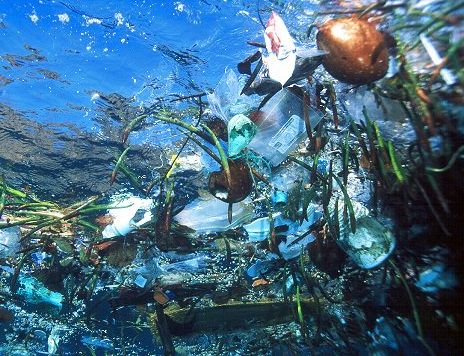 BPA leached from plastic: not just a problem for landlubbers.It’s looking more and more like the chemical industry’s idea to make the endocrine-disrupting chemical bisphenol A ubiquitous in the environment was a terrible, and terribly dangerous, idea. Having successfully tainted the food supply with its presence, BPA has now has put the world’s oceans at risk (via Science Daily):
BPA leached from plastic: not just a problem for landlubbers.It’s looking more and more like the chemical industry’s idea to make the endocrine-disrupting chemical bisphenol A ubiquitous in the environment was a terrible, and terribly dangerous, idea. Having successfully tainted the food supply with its presence, BPA has now has put the world’s oceans at risk (via Science Daily):
Scientists have reported widespread global contamination of sea sand and sea water with the endocrine disruptor bisphenol A (BPA) and said that the BPA probably originated from a surprising source: Hard plastic trash discarded in the oceans and the epoxy plastic paint used to seal the hulls of ships. The team analyzed sand and seawater from more than 200 sites in 20 countries, mainly in Southeast Asia and North America. All contained what Saido described as a “significant” amount of BPA, ranging from 0.01 parts per million (ppm) to 50 ppm. They concluded that polycarbonates and epoxy resin coatings and paints were the main source.
Secure · Tax deductible · Takes 45 SecondsSecure · Tax deductible · Takes 45 Seconds
One of the notable findings in this study is that in the ocean environment, “unbreakable” polycarbonate plastic… breaks down. And when the stuff breaks down, it releases a nasty set of toxins, including BPA. Meanwhile, every ship in the world contributes to the process simply by the act of steaming about the ocean while the BPA in its exterior paints and epoxy resins leach into the water. Even worse, the scientists measured BPA concentrations at levels known to affect mollusks, crustaceans and other sea life.
It sorta makes the FDA’s refusal to ban the chemical irrelevant, at least for the oceans’ sake. But for the sake of people ingesting the stuff through can linings, etc, the agency needs to act. Now. Thanks to the potent combination of a gung-ho chemical industry and lax government oversight, we are now well into a massive experiment with the endocrine systems of pretty much every form of life on earth. As if we don’t have enough to worry about with climate change and antibiotic resistant bacteria, now we’re just going to have to cross our collective fingers and hope some kind of BPA-related nightmare scenario doesn’t occur.




